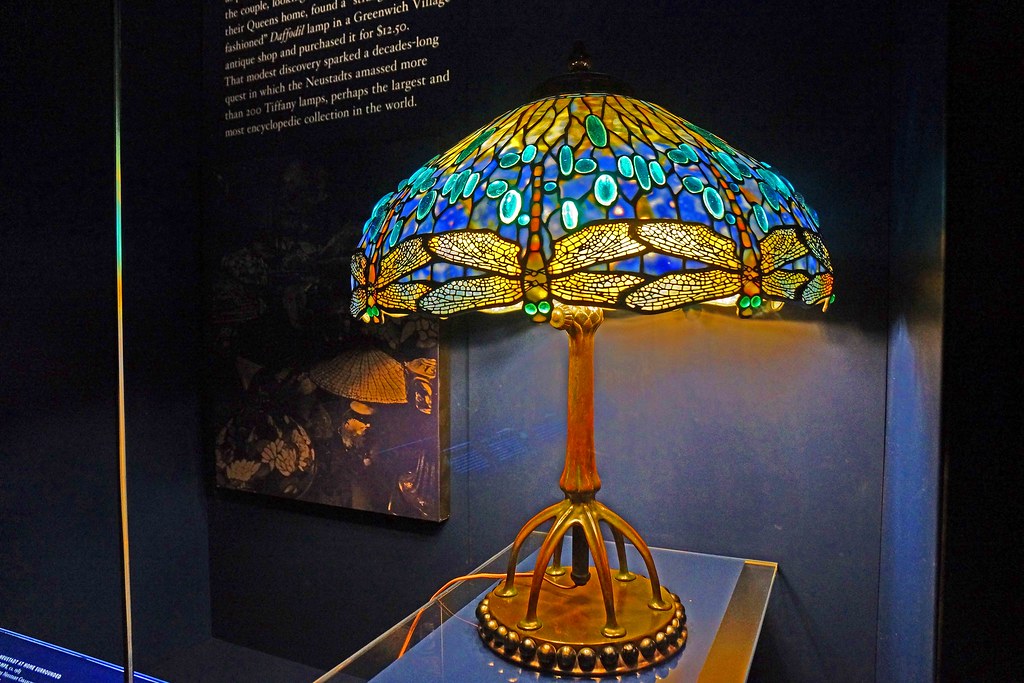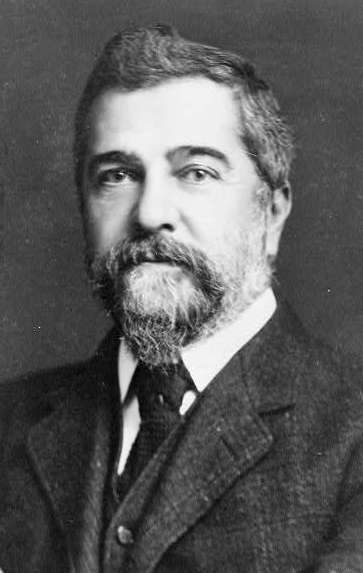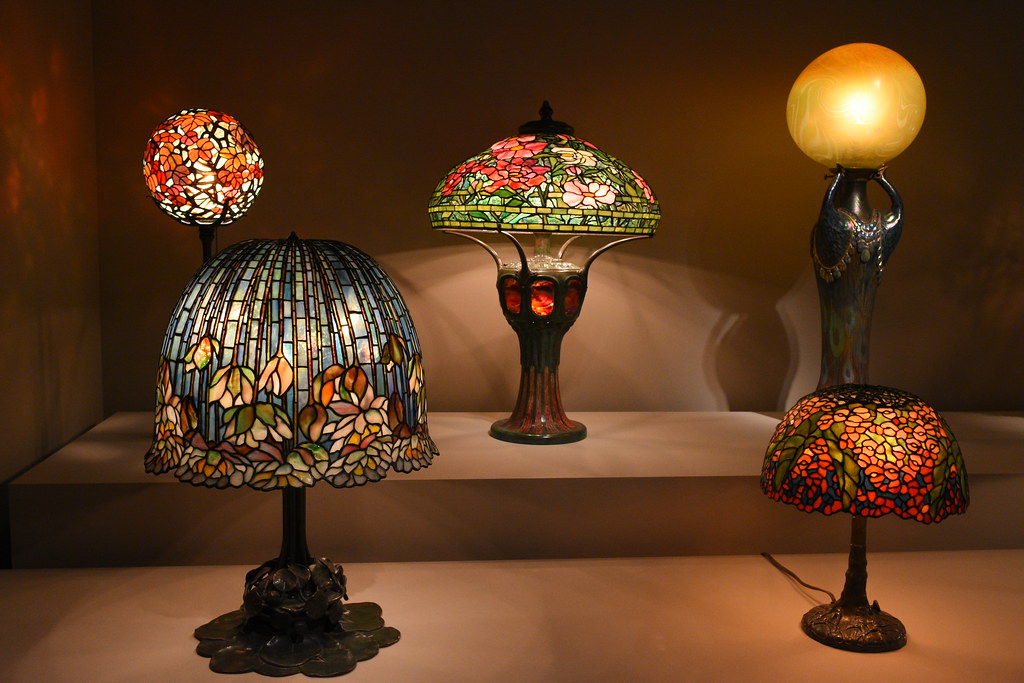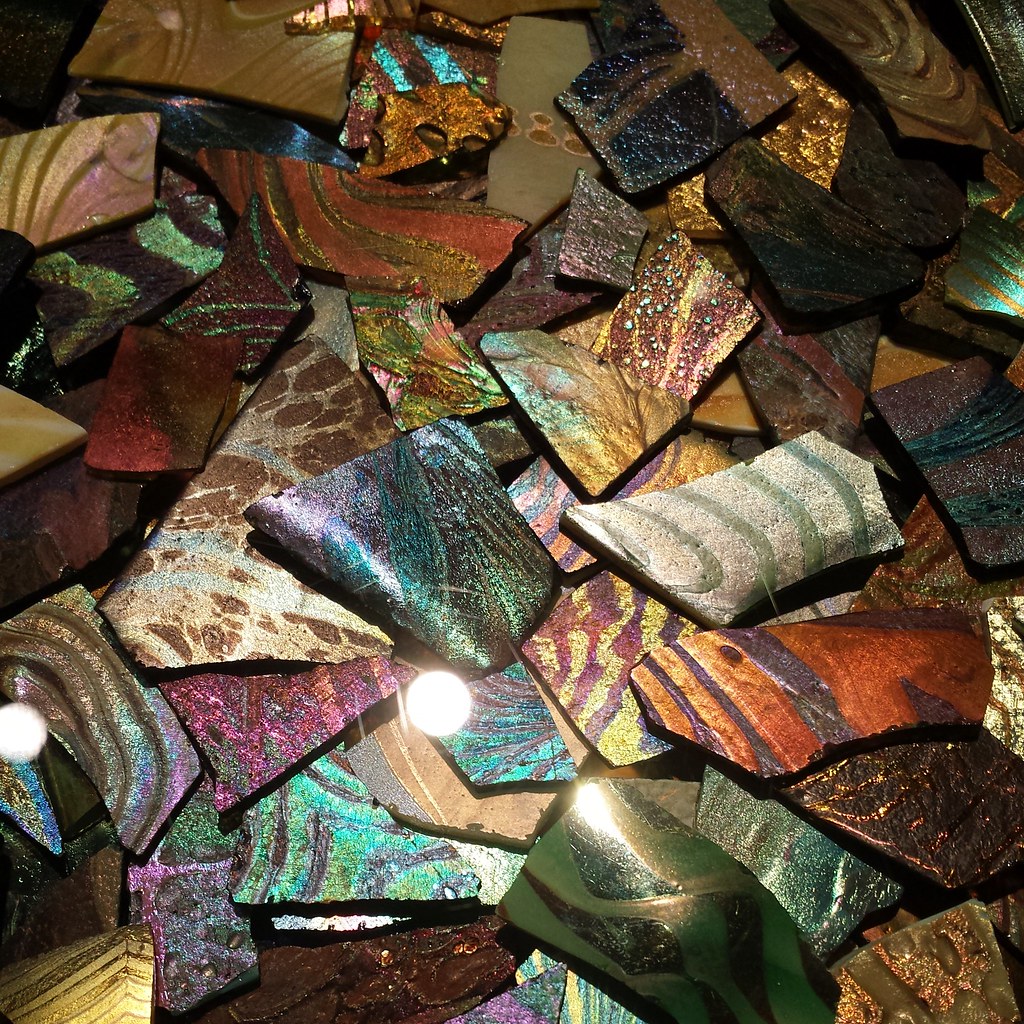Tiffany Glass
What is Tiffany Glass?

Tiffany glass is a type of glassware designed by Louis Comfort Tiffany and manufactured through Tiffany Studios in New York City, New York. Produced from 1878 to 1933, Tiffany’s glass was a response to what materials and designs he felt the glass industry was lacking at the time. Tiffany employed several techniques in the fabrication of his glass and many of his products were made in collaboration with multiple designers, including the head of the Women’s Glasscutting Department, Clara Driscoll (1861-1944), glass designer and artist, Agnes F. Northrop (1857-1953), and British-Irish stained glass artist, Frederick Wilson (1858-1932).
Tiffany glass was primarily marketed to the upper class, those who were financially privileged enough to afford a substantial education and who could splurge on ornate, interior decor. Advertisements for Tiffany glass pieces were displayed in magazines such as House Beautiful, Scribner’s, Country Life in America, and Brush and Pencil, all of which catered to audiences of higher economic standing. He also advertised in trade journals dedicated to showcasing the care and quality found throughout the decorative glass industry. Such publications included Glass and Pottery World, The Pottery and Glass Salesman, and Crockery and Glass Journal.
Louis Comfort Tiffany
Born in New York City, New York, Louis Comfort Tiffany (1848-1933) is one of the most prolific figures in glassware, whose creative endeavors effectively reshaped the glassmaking industry. Descended from a line of craftsmen and artisans, Tiffany was continuously enveloped in the happenings of the artistic world. His grandfather was a textile manufacturer and his father, Charles Lewis Tiffany (1812-1902) had founded the renowned Tiffany & Co., in 1837, famed for its sterling silver jewelry and other luxury goods.

After attending the Pennsylvania Military Academy and Eagleswood Military Academy, the younger Tiffany began his artistic endeavors as a painter, taking inspiration from the landscapes of American painter, George Inness (1825-1894) and the brushstroke stylings of American painter and interior designer, Samuel Colman (1832-1920). Tiffany managed to explore nearly every creative medium imaginable in a career that lasted nearly four decades and left an unmistakable legacy as a household name. His frequent travels immersed him in the charm and splendor of illustrious art objects such as the seemingly bejeweled stained glass windows of Chartres Cathedral in France or the early Christian mosaics of San Vitale in Ravenna, Italy. His exposure to these ancient glassworks was perhaps the catalyst for his most famous creative undertaking.
Around 1875, Tiffany began to focus on studying the chemical and technical attributes of glassmaking. This new medium shifted his focus to interior design, and he soon became a partner in the Louis C. Tiffany & Company, Associated Artists Firm, which managed interior decoration commissions for stained glass and mosaic tile pieces. Shortly after the disbandment of the Associated Artists in 1883, the Louis C. Tiffany & Company rebranded as the Tiffany Glass Company, which now offered an even wider range of services. This move reflected Tiffany’s characteristic ambition and his unshakeable commitment to connecting with the public through the enriching value of beauty.

Significance
Tiffany was thoroughly invested in the value of beauty, an interest he passionately explored through his efforts to reinvent the glassware industry. He was wholly committed to the conception of new techniques for crafting glass pieces. Nature served as his main source of inspiration, with many of his designs incorporating floral or faunal motifs. His stained glass windows depicted natural landscapes, offering whoever glanced their way a picturesque scene sure to calm even the most weary of minds. These natural motifs bled into other pieces he designed, such as some of his most famous works, the opulent stained glass Tiffany lamps. First introduced in 1893, Tiffany’s lamps were notable aspects of the nineteenth-century Art Nouveau movement, an artistic and architectural aesthetic that also frequently borrowed motifs from nature. Each lamp typically consisted of a camed glass shade pieced together using the copper-foil technique and decorated with various patterns, most often bands of flowers or insects. Other design styles included geometric shapes, irregular upper or lower borders, or the inclusion of Tiffany’s innovative favrile glass.
Innovations in Glassmaking

Tiffany glassware could be floriform—long-necked and flowering in design, as exhibited in the ‘Peacock’ and ‘Jack-in-the-Pulpit’ vase shapes—but also followed the more traditional gourd, bulbous, or robust shapes. In 1894, Tiffany trademarked the iridescent art glassware, pottery, and metalwork crafted at his studios as ‘Favrile’ glass. Borrowed from the Old English word fabrile, which also has the same root word as fabricate, Favrile denoted the intricate, handmade quality of Tiffany’s glassware. Much like opalescent glass, color was naturally ingrained—rather than merely resting on the surface as a luster—through a unique chemical process in which molten glass was treated with metallic oxides. This innovation later awarded Tiffany a grand prize at the 1900 Paris Exposition. Other commonly used techniques include the Streamer, Fracture, Fracture-streamer, Ring mottle, Ripple, and Drapery glass types.
The following video showcases several Tiffany favrile glass pieces housed in the Corning Museum of Glass collection.